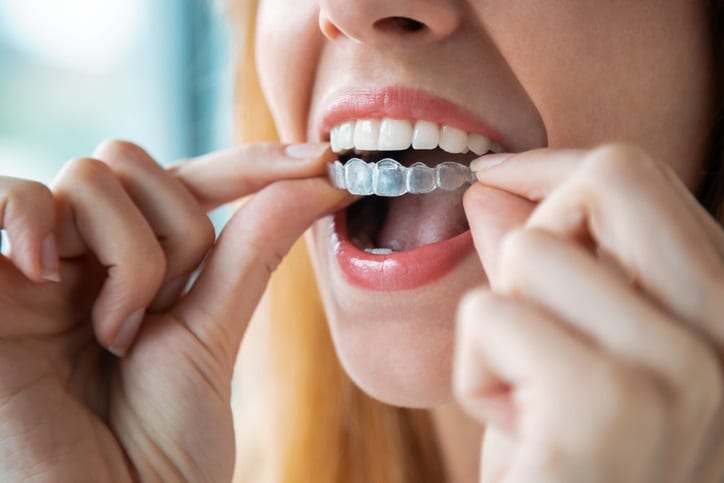Does Your Smile Reflect The Real You?
The Clear Alternative To Braces
![]() Developed with orthodontists, Invisalign is a virtually invisible solution, so you can smile both during treatment and after. In fact, almost no one will know you are wearing them unless you tell. By using a series of clear, removable aligners that are changed about every two weeks, Invisalign gradually moves your teeth toward the smile you’ve always wanted.
Developed with orthodontists, Invisalign is a virtually invisible solution, so you can smile both during treatment and after. In fact, almost no one will know you are wearing them unless you tell. By using a series of clear, removable aligners that are changed about every two weeks, Invisalign gradually moves your teeth toward the smile you’ve always wanted.
For years, Hancock and Johnston Dentistry has been an authorized provider and is trained on Invisalign products.
Clear, Removable, Comfortable
Invisalign is comfortable to wear and easy to live with. A dentistry appointment is scheduled every few months to check your progression and get new aligners. Average treatment time is about a year. Because the aligners are removable, you can continue to eat your favorite foods. And you can brush and floss normally to keep your teeth and gums healthy.
Treatment Options
Not only is Invisalign versatile, helping to correct a broad range of dental and orthodontic issues, but it really works. A dentist with expertise on Invisalign can correct the following problems:
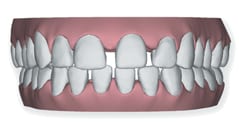
Spacing
Spaces between the teeth
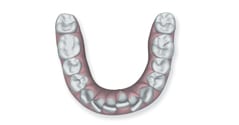
Crowding
Not enough room for the teeth
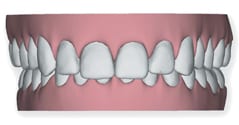
Overbite
Protruding upper teeth
Deep Bite
Upper front teeth hide lower
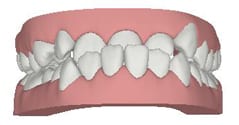
Underbite
Protruding lower teeth
Open Bite
Back teeth are together but space is present between the front teeth
The Hygienic Benefits of Straighter Teeth
Healthier Gums
Properly positioned teeth are easier to brush and floss than teeth that are crowded, crooked, or spaced too far apart. Properly aligned teeth can help gums fit more tightly around them, which may lead to better periodontal health.
Easier Cleanings
With maintenance of good oral hygiene, the chances of having plaque retention, tooth decay, or periodontal (gum) disease can be reduced.
Decreased Risk of Abnormal Wear
Properly aligned teeth can be less stressful on the supporting bone jaw joints.
FAQs
Invisalign may cause mild discomfort, especially when switching to a new set of aligners. You might feel pressure as your teeth adjust, but this usually fades within a few days. Most users find it less painful than traditional braces.
You may not qualify for Invisalign if you have severe misalignment, large gaps, missing teeth, or dental implants that interfere with movement. Poor oral health, such as cavities or gum disease, can also be a limiting factor. Additionally, growing children or those with complex orthodontic needs may require alternative treatments.
Yes, Invisalign requires regular maintenance. You need to clean the aligners daily with a soft brush and lukewarm water to prevent bacteria buildup. Avoid eating or drinking (except water) while wearing them to prevent stains. Also, store them in their case when not in use to avoid damage.
The most common complaint is discomfort when switching aligners, especially in the first few days. Others mention the need to wear them 20–22 hours a day, frequent cleaning, and minor speech changes. Some also find them easy to misplace when removed.
The best age for Invisalign is typically the mid-teens to adulthood. Teens benefit once most permanent teeth have grown in, while adults can use it to correct alignment at any age. A dentist can assess the right timing based on dental development.
Invisalign is worth it for those seeking a discreet, comfortable, and removable alternative to braces. It effectively treats mild to moderate alignment issues with fewer food restrictions. However, it requires discipline to wear them consistently. A dentist can help determine if it’s the right choice for you.
Some dental insurance plans cover Invisalign, but it depends on your provider and plan. Invisalign is often seen as a cosmetic treatment which can be excluded from dental insurance plans. It’s important to check with your insurance provider to understand coverage details and potential out-of-pocket costs.

